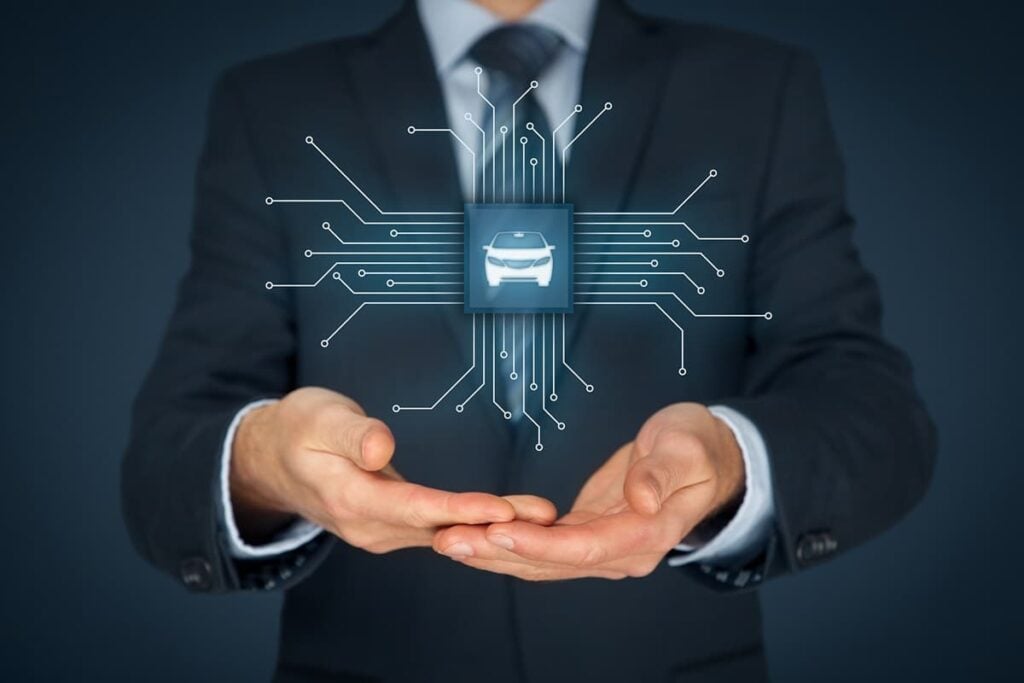Nauto – Autonomous Driving Data from Real Drivers
Table of contents
Table of contents

Lately we seem to see lots of mixed signals about where this latest bull market is headed. On one hand, we’d like to believe that the vast efficiencies we’ll realize with artificial intelligence algorithms place us on the cusp of the biggest bull market mankind has ever seen. On the other hand, some of the IPOs we’ve seen lately from companies where layoffs are taking place shortly after IPO are leading us to believe that this bull market is on its last leg similar to the dot-bomb era. Here are the sorts of conflicting messages we’re talking about using the recent IPO of Blue Apron (NYSE:APRN) as an example:
One company that should really be hoping for a bear market right now is Softbank (TYO:9984). As Warren Buffet said, “prospective purchasers should much prefer sinking prices”, and Softbank has about $100 billion reasons why they should be praying to their favorite Japanese God that we see a bear market ASAP. With that much money to spend over the next 5 years, the best thing that could happen would be for the market to crash. While confusion reigns supreme at the moment regarding the market’s direction, Softbank isn’t sitting around waiting for clarity. Every other day we’re reading about some new investment they’re making, like today, when they announced plans for a $1 billion investment into online sports apparel retailer Fanatics.
What we can be sure of is that Masayoshi Son, a man who is regarded as one of the best technology investors ever, is doing his due diligence when it comes to placing his bets. With his belief that the Singularity is nigh, we’re especially interested to know which IoT bets he is making aside from his massive bet on IoT chip maker, ARM. Maybe the most high-impact application of IoT would be autonomous vehicles, and Softbank has recently showed us a company that they believe will succeed in this space.
About Nauto
Not to be confused with Naruto, the third-best selling manga of all time, Nauto is the name of a Silicon Valley based autonomous vehicle technology startup that was founded in 2015 and has taken in nearly $174 million in funding so far. This startup was first featured in our article titled “5 New Self Driving Car Companies” and since then closed their latest funding round, a $159 million Series B, around the middle of last month, with participation from Softbank as lead investor along with Toyota’s new AI-dedicated fund, General Motors, and BMW. The first thing you will notice about Nauto is that they’re focused on improving the safety of driving, and they’ve thrown up some statistics on distracted driving that show how big of a problem it is:
While it’s bad enough that we have a bunch of tools speeding around recording themselves on Facebook live before they smash into some immovable object that kills them, we now have the ultimate distraction device that never leaves our sides – the smartphone. That’s the first major problem Nauto is trying to solve.
The second problem to solve is the vast amount of data we need to accumulate before we can achieve true autonomous driving. One way to accumulate this data is by having test cars roaming the streets, some even piloted by humans who are dressed up as car seats for whatever reason. Another way to collect this data is by just making data collection a “feature” for the cars you sell. This is how Tesla has managed to amass billions of miles of simulated driving data. Then there’s Nauto, whose second generation device now contains a “bi-directional camera” that looks at both the road and driver at the same time.
This is a huge advantage over just looking at the road. Since AI can now detect human emotions in real-time, suddenly you’re able to see what emotions are elicited from what takes place directly in front of the vehicle. If a driver shows any sign of road rage developing, the car radio begins playing classical music. (Actually, we just made that up, but it’s not the worst idea, right?) Before we get too far ahead of ourselves though, let’s look at the hardware product Nauto has on offer:
As you can see in the above diagram, the device contains functionality that can provide a great deal of information. In previous articles we looked at devices that plugged into a car’s ODB-II port in order to report on things like braking or acceleration. Nauto has this covered with an on-board accelerometer and gyroscope. We also see a GPS module which can track location and a wireless connection that can be used to send all that data up to the cloud so that all the connected cars can learn from each other. Then of course, there’s the “driver cam” which tracks various points on a driver’s face to detect distraction:
While the driver cam is watching for things like inattention, drowsiness, or even signs that you are driving under the influence, the high-definition forward looking cam is watching your proximity to other vehicles (otherwise called tailgating), your adherence to the posted speed limit, and even rolling stops and running red lights. All of this behavioral data is then combined with facial recognition so that Nauto can begin producing reports that look like this:

“Did you ever notice that anyone who drives slower than you is an idiot and anyone who drives faster than you is a maniac?” said the great philosopher, George Carlin. Now you don’t have to deal with that subjectivity and everyone is judged the same with no bias. You can even apply some gamification to the whole thing and reward those with the best driving records and isht-can those drivers who are a liability:
Since the device is constantly talking to the cloud, you can actually connect to any one of your drivers in real-time to see inside their car or see what’s in front of them on the roadway. This tool is almost a must-have for commercial driving fleet managers, especially when you consider the benefits of using it. It’s probably only a matter of time before insurance companies require this technology in exchange for reduced rates, which is maybe why insurance giant Allianz is an investor in Nauto too.
So how well does this whole thing actually work? Nauto claims that companies that adopt the solution will see an average 6 month return on investment with a 37% reduction in collisions. According to Reuters, they’re on track to hit 1 billion simulated driving miles by the end of this year. Throw in the added benefit of a 80% reduction in claims costs in the rare case of an accident, and it’s easy to see that it wasn’t just the manga-sounding name that made Masayoshi Son place a bet on this remarkably cool autotech company.
Sign up to our newsletter to get more of our great research delivered straight to your inbox!
Nanalyze Weekly includes useful insights written by our team of underpaid MBAs, research on new disruptive technology stocks flying under the radar, and summaries of our recent research. Always 100% free.


















